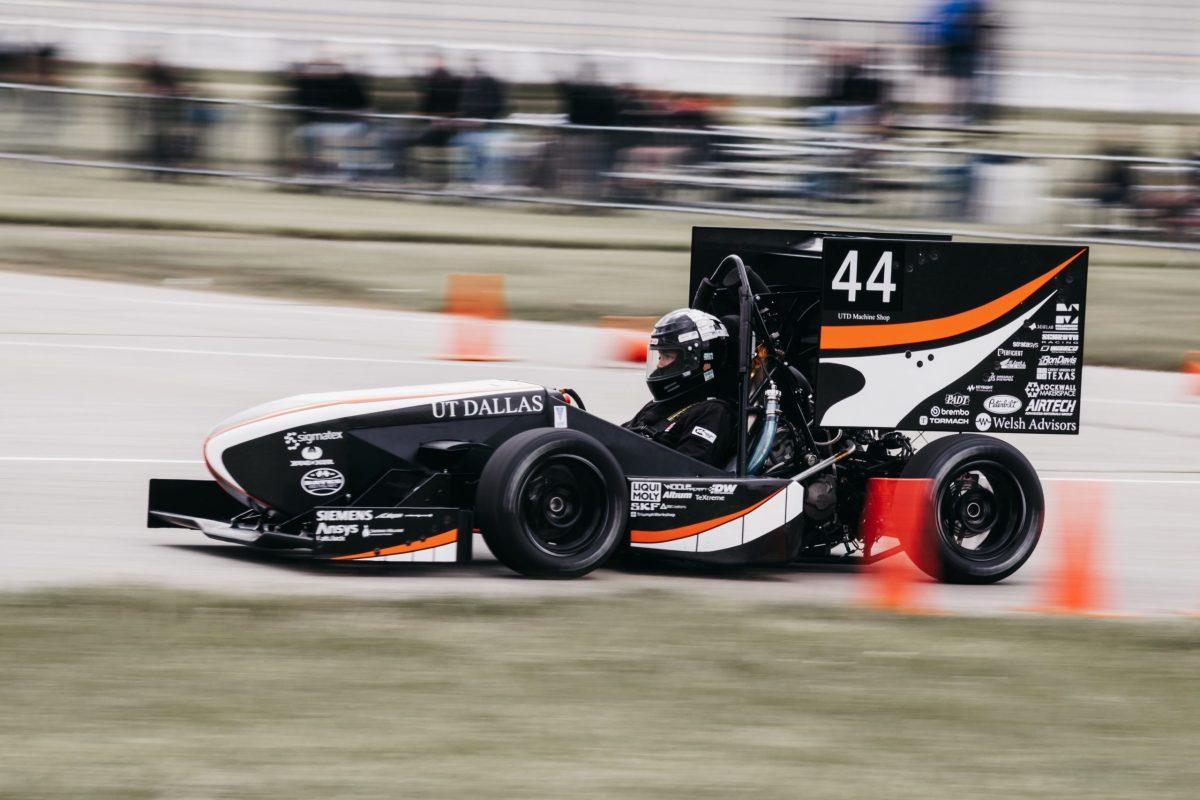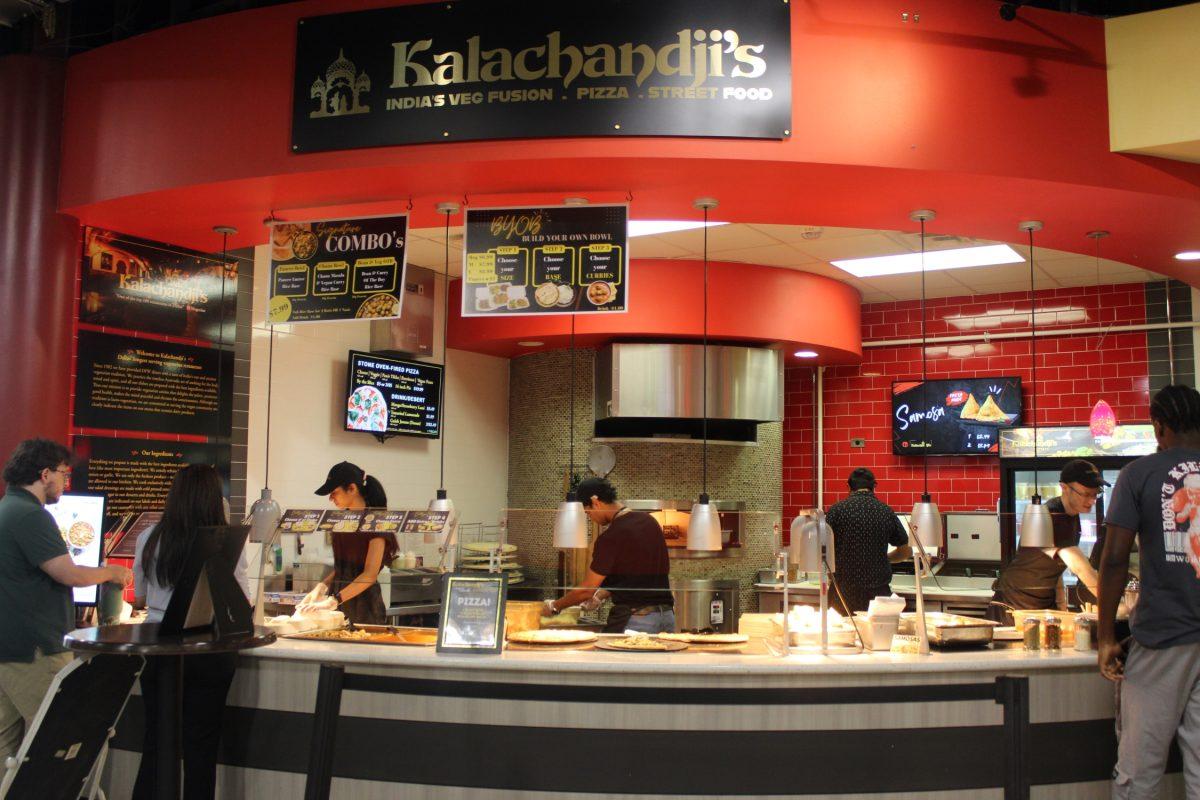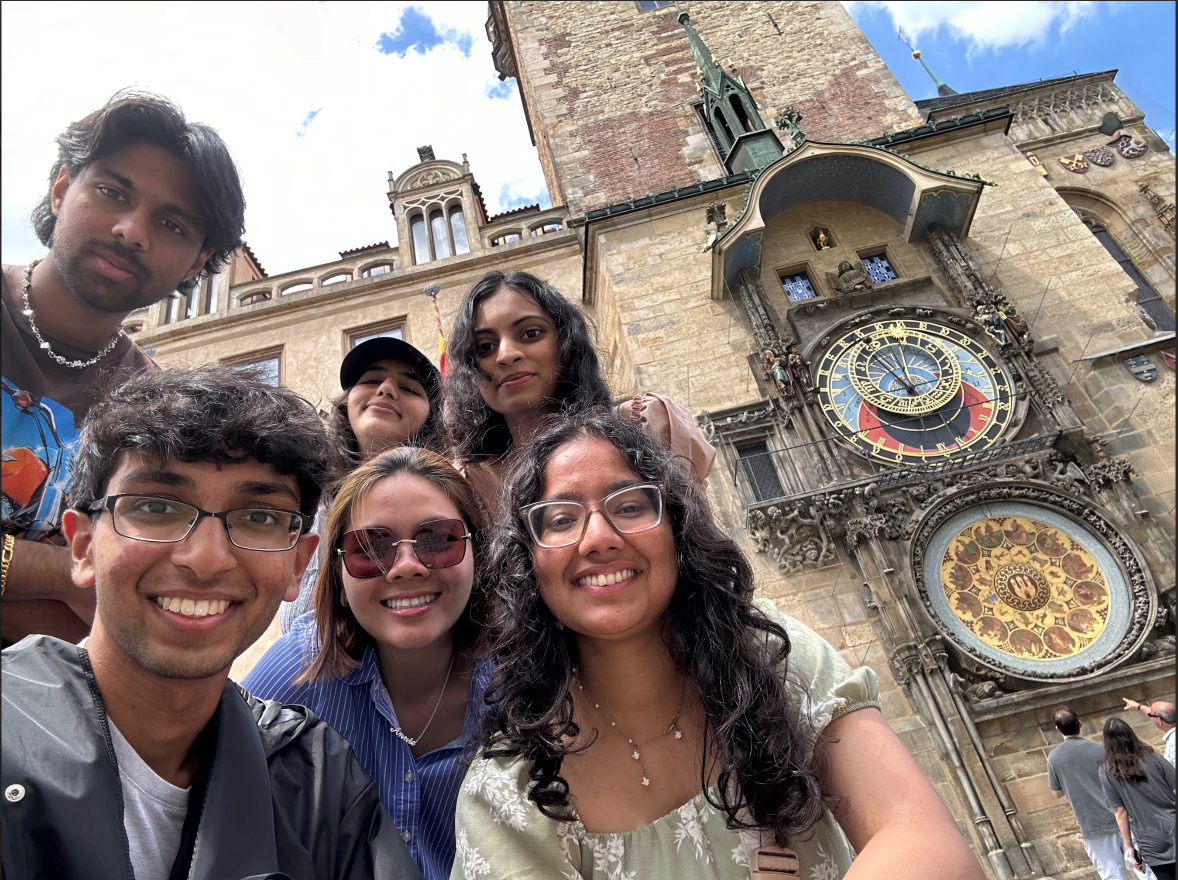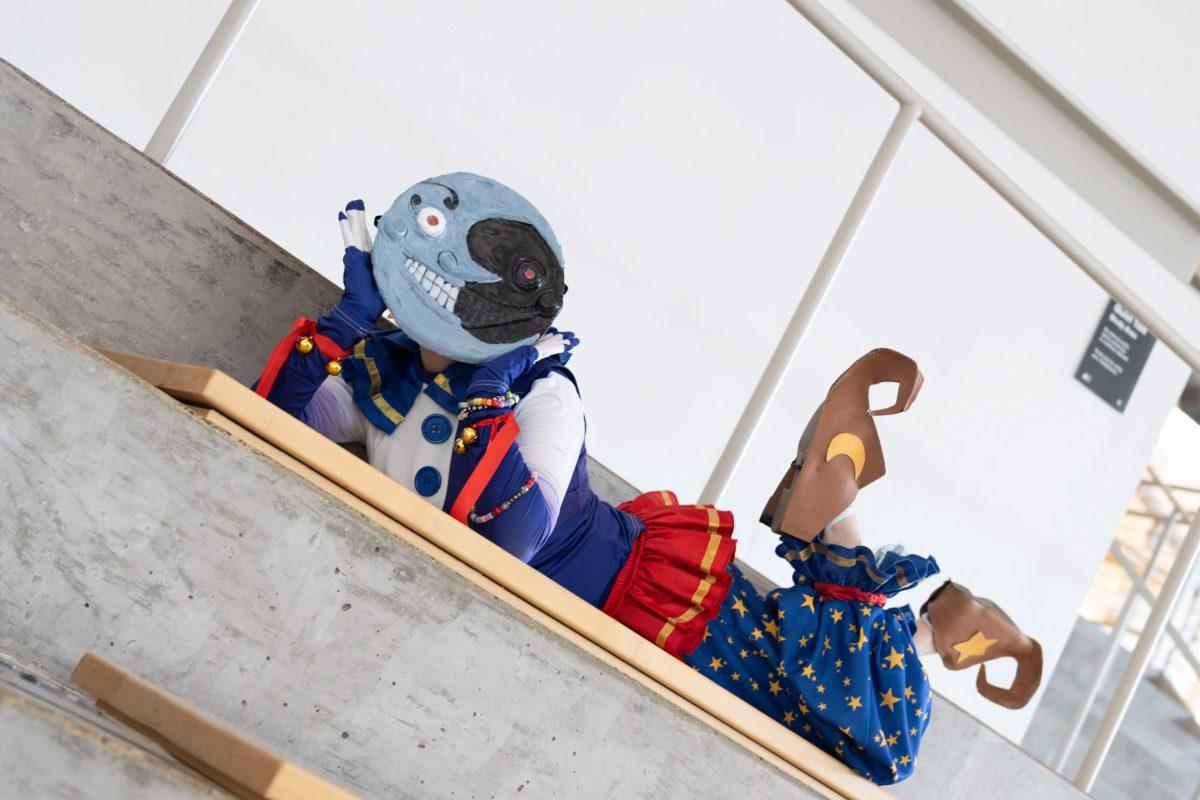The drivers only have three minutes to swap places. Emotions run high. Anxiety rushes through the team as they pray this year won’t be like the last, hoping nothing goes wrong with their car so they can finally complete the course that has bested them until now. As the car crosses the finish line, the team erupts into screams, tears and laughter, watching their year-long hard work pay off.
For the first time in six years, Dallas Formula Racing — a student-led organization at UTD — completed the endurance dynamic event, placing 29th at the 2024 Formula Society of Automative Engineers competition.
FSAE is an annual four-day competition that takes place in Michigan, with up to 120 teams from different universities and colleges taking part. Schools compete in two types of events: static and dynamic. Static events occur during the first two days of the competition, where FSAE judges score teams on design; costs and manufacturing; and presentation, a sales pitch to pique the interest of sponsors and investors. The second half of the event consists of dynamic, or racing, events, which include acceleration, skid pad and autocross for day one, and an entire day dedicated to the endurance event — the one event DFR had not been able to complete until now because of car complications.
Computer engineering sophomore Apurva Betgar is one of the two powertrain leads for DFR. As a powertrain lead, she oversees everything that has to do with the engine, which includes the transmission, driveshaft, axles and differential.
“[The] powertrain itself is quite a huge subsystem,” Betgar said. “Our previous powertrain lead, Brandon, [dealt] with powertrain single-handedly and he struggled a lot. He felt it was appropriate to have two primary leads.”
In previous FSAE competitions, DFR could not complete the endurance event because of torquing complications with the powertrain. In 2022, a chain broke because a teammate had put a half link on the chain and in 2023, the tripod broke, Betgar said.
“It was a really big thing for us to make sure that every single bolt is tightened down,” Betgar said. “Everything is secure. The chain does not have a half link, the half shafts and tripod bearings are all sized correctly — a lot of preparing for [the competition] was just double checking everything, making sure everything was put on properly [and] that [it] worked.”
Betgar said that static events are stressful because judges nitpick every single rule of technical inspection, asking questions and gauging students’ ability to explain and apply engineering principles to their car. Even though the team did its best to ensure everything was perfect the day before static events, problems arose anyway.
“A couple of issues come up with our brake pedal setup,” Betgar said. “So a little bit of stress, a little bit of panic is setting in. We also, at that time, are realizing we have a couple of fuel issues. While we’re waiting in line for [inspection], we’re all sweating trying to get underneath the car, clamor[ing] in tight spaces to try and get [things] fixed. Everyone’s everywhere. It’s chaos.”
Just when the team thought it had everything under control came the most stressful part of inspection: the noise test, wherein the car must not exceed 103 dB when idle nor 110 dB at 11,000 revolutions per minute.
“We didn’t account for our exhaust — our muffler exit was right in between our aero packages and plates, creat[ing] an entire echo chamber,” Betgar said. “I remember going to a close-by supermarket to get steel wool and shoving steel wool down the exhaust. It’s freezing cold because it’s raining and we’re all shivering, and my hands are burning because I’m touching the muffler. But it is what it is.”
However, the steel wool solution did not work, and the team had to brainstorm another solution once again.
“Our solution: we found a big metal tube and we attached it to our mufflers, so that way the end of that [tube] is outside of the end plates,” Betgar said.
With the team’s creative fix, the engine’s noise no longer echoed and the team passed onto the dynamic events.
Mechanical engineering junior Grant Mitchell was the second driver during the endurance test. Being the second driver, Mitchell took the victory home for his team and showed everyone the work DFR has done over the last year.
“It was exhilarating,” Mitchell said. “It was very emotional. It was a very powerful moment and very empowering, and it gave the team so much energy at the end of that competition that it translated immediately into our next design cycle, which has been going on since May.”
Mitchell said completing the endurance test set a new standard, showing new teammates that DFR is capable of completing the entire competition. It will be a minimum now for them to complete every test at FSAE competitions, Mitchell said, and DFR is still finding ways to improve.
“There are some ergonomic improvements that need to be made to account for driver fatigue,” Mitchell said. “This has not been something we needed to worry about because we hadn’t actually completed endurance yet, but now that we have and we know what that’s like, there’s a lot of time and performance to be gained from having a comfortable driver who doesn’t get tired throughout the race.”
DFR hopes to expand its current workspace, a small garage in ECSW 1.455, as it grows in numbers and works on multiple cars. In addition to the garage, DFR also uses the UTD Machine Shop to manufacture car parts. DFR has already started working on its car for FSAE 2025, hoping to bring a lot of changes and a lot of success to the team. It will be the first time it has made a major change to the vehicle’s architecture, which will be a brand-new chassis with a suspension design that hasn’t changed since 2020, Mitchell said.
“Our goal is to be the fastest in Texas,” Betgar said. “This is more than just building a car; there’s a lot more that goes into it. [2024 FSAE] was a big, pivotal moment for the history of DFR, and hopefully things just keep getting better.”







